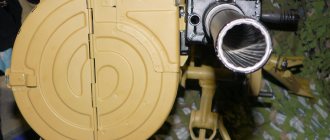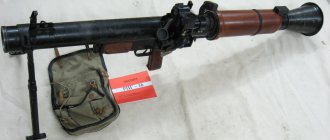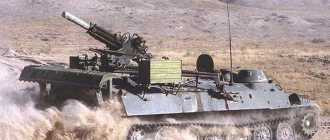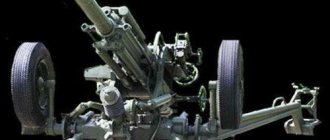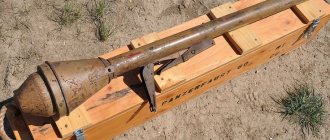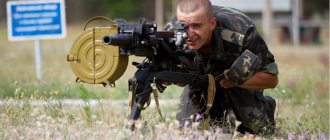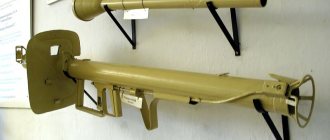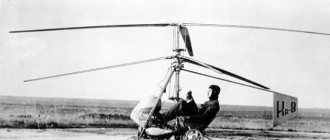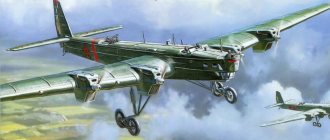AGS-40 "Balkan" is a Russian automatic mounted grenade launcher developed at NPO Pribor. The caliber of this weapon is 40 mm. It is designed to destroy unprotected living enemy forces, as well as enemy infantry located in field shelters or behind natural folds of the terrain.
Small-scale production of weapons began back in 2008. It is planned that this year the AGS-40 “Balkan” grenade launcher will finally be adopted by the Russian army.
The creators of the AGS-40 were tasked with creating a weapon superior in power and maximum range to the AGS-17 “Plamya” and AGS-30 automatic grenade launchers. And, judging by the reviews of those who had the opportunity to get to know the new weapon better, the designers coped with this task brilliantly. Thanks to the increase in caliber to 40 mm and the use of new ammunition, the AGS-40, having almost the same weight as its famous predecessor AGS-17, has significantly “grown” in firepower, rate of fire and firing range.
The AGS-40 is based on the experimental 40-mm Kozlik automatic grenade launcher, which was developed in the 90s of the last century.
AGS-40 grenade launcher. Weight. Rate of fire. Caliber. Firing range
The automatic easel grenade launcher AGS-40 “Balkan” (GRAU index 6G27) traces its origins to the experimental 40mm grenade launcher TKB-0134 “Kozlik”, developed at the Tula TsKIB SOO in the eighties of the last century. When developing the TKB-0134 grenade launcher, the goal was to significantly increase the firing range and efficiency compared to the standard AGS-17 30mm automatic grenade launcher at that time.
About ammunition
Easel grenade launchers are equipped with composite metal belts with a capacity of 20 ammunition. The tape is fed from right to left. For this purpose, the AGS-40 is equipped with a special round box, which is mounted to the gun on the right side. These boxes contain two already equipped tapes.
AGS-40 Balkan - video
To achieve this task, the developers increased the caliber of the weapon to 40mm, also using a non-standard design for this class of weapon of a caseless ammunition with a “flying away” cartridge case (the propellant charge chamber is an integral part of the grenade body and flies out of the barrel along with it). A similar solution was used in the 40mm VOG-25 rounds for the GP-25 under-barrel grenade launchers, but the grenades for the TKB-0134 had approximately twice the mass and a significantly longer firing range.
In the nineties, on the basis of TKB-0134, the 40mm Balkan grenade launcher was developed, but due to the difficult economic situation in the country, the development was greatly delayed. Currently, the development of the Balkan grenade launcher system, which includes the 6G27 easel automatic grenade launcher and 40mm caseless rounds for it 7P39, is in charge of the Federal State Unitary Enterprise State Scientific and Production Enterprise Pribor, the main developer of ammunition for automatic grenade launchers and small-caliber automatic guns in Russia.
In 2008, Pribor supplied 6 Balkan grenade launchers and the required amount of ammunition for testing to the Russian Armed Forces, so it is possible that in the next few years these grenade launchers will enter service with the Russian Army. At the same time, for the 40mm Balkan grenade launchers, a significant increase in firing range (up to 2500 meters) and target destruction efficiency (up to 2 times) is claimed compared to 30mm AGS-17 and AGS-30 caliber grenade launchers. The Balkan automatic mounted grenade launcher uses gas-operated automatics, in which the role of a gas piston is performed by a firing pin rigidly connected to the bolt frame.
This solution became possible (and necessary) due to the absence of a separate sleeve for 7P39 grenades, which ensures the obturation of powder gases in the barrel chamber. Firing is carried out from an open bolt, and when the bolt group comes to the front position, the bolt frame with the firing pin continues to move forward under the action of the return spring, turning the bolt to lock it, and then the firing pin strikes the primer in the bottom of the grenade.
At the moment of firing, the powder gases escaping from the bottom of the grenade put pressure on the end part of the firing pin, pushing it (and the bolt frame associated with it) back. After the grenade has left the barrel and the pressure in it has dropped, the bolt carrier rolls back enough to rotate the bolt and unlock it, after which the entire bolt group rolls back by inertia.
The grenade launcher is fed with ammunition from loose metal belts fed from right to left. Grenades are shipped from the factory loaded into belts with a capacity of 20 shots, 2 belts per transport container. For firing, the tape is placed in a round container adjacent to the right side of the grenade launcher body.
The grenade launcher is mounted on a tripod, which is a modified AGS-17 grenade launcher with a seat for the shooter mounted on the rear supports. The Balkan grenade launcher is equipped with an optical sight as standard.
About the device
Unlike previous models, AGS-40 has a simplified design. The body of the grenade launcher is represented by a 40 cm barrel and a tubular receiver. It is used as a place to place the main mechanisms of the grenade launcher. The handles with which the shooter can control the fire are located at the rear of the receiver. The trigger is located right there. Near the breech there is space for an enlarged system casing.
The right side of the grenade launcher is equipped with a swinging lever, which is connected to the main automation of the gun. Using this lever, the AGS-40 is reloaded. The place for placing the bolt group and the return mainspring was the inside of the receiver. The grenade launcher is equipped with a rotating bolt with a movable firing pin attached to it. The presence of a gas chamber and piston, standard for weapons using gas-operated automatics, is not provided for in the Balkan grenade launcher.
Grenade launcher "GM-94"
| GM-94 in combat position |
GM-94 with the stock folded and the barrel open for reloading
The GM-94 hand-held multi-charge grenade launcher was developed at the Tula Instrument Design Bureau in the early 1990s.
The main purpose of the new weapon was to provide fire support for infantry in close combat, especially in the city, as well as to conduct police special operations.
The design of the grenade launcher is based on the design of the Lynx pump-action shotgun (also developed by KBP) with reloading by moving the barrel. The active firing principle allows you to safely fire from confined spaces.
GM-94 during firing
The design of the GM-94 grenade launcher is a magazine weapon with manual reloading using a fore-end that moves back and forth, connected to a movable barrel. Although the pump-type muscular drive (movement of the barrel back and forth) reduces the maximum possible rate of fire, this is not significant in a weapon of such a large caliber, but the reliability of action with a muscular drive naturally increases.
A tubular magazine holding 3 grenades is located above the barrel. To recharge it, there is a charging window on the upper surface of the receiver, covered with a hinged lid.
| Caliber, mm | 43 |
| Length (stock folded/unfolded), mm | 540 / 810 |
| Weight without grenades, kg | 4.5 |
| Magazine capacity, no. pomegranate | 3-4 |
| Initial speed, m/s | 100 |
| Sighting range, m | 300 |
| Maximum range, m | 600 |
The bolt mirror is stationary; the coupling of the forward-moving barrel with the bolt is ensured by two hooks on the sides of the breech of the barrel. Spent cartridges are ejected downward.
The trigger mechanism is self-cocking, which increases the safety of its use in a loaded state (a cartridge with a grenade in the chamber). The design includes a manual safety lock.
The grenade launcher has a folding stock, which also has the function of a carrying handle, which, given the fairly large mass of the weapon, undoubtedly increases the ease of transportation. The average time for transferring a grenade launcher from the traveling butt position to the combat position is insignificant and does not exceed 1-2 seconds.
GM-94 with non-lethal ammunition
A whole range of 43-mm unitary rounds was developed specifically for the GM-94, including high-explosive non-fragmentation grenades, tear gas grenades, and rubber “bullet” rounds.
For firing, VGM 93 rounds of several types are used - gas (“smoking”) with an irritant formulation, shock shock with an elastic striking element, and thermobaric. A thermobaric grenade weighing 0.25 kg (shot weight 0.35 kg) is capable of hitting manpower within a radius of 3 m, equipment with an armor thickness of up to 8 mm, and is effective against wooden barriers and brickwork half a brick thick.
Of particular interest are high-explosive ammunition that has thermobaric equipment with a high specific mass of explosive to the mass of the shot. This is achieved through the use of a plastic grenade body. This unusual decision was made to ensure the safe use of a grenade launcher at minimum ranges, preventing the shooter from being hit by fragments of his own grenade. The zone of destruction of enemy personnel by the high-explosive effect (shock wave, high temperature) of a thermobaric charge has a radius of up to 3 meters, and the minimum (conditionally) safe firing distance is only 5 meters.
| GM-94 and grenades used in a grenade launcher |
The mass of the VGM-93 thermobaric (high-explosive) grenade is about 250 grams, of which 160 grams are the explosive charge. the initial speed of the grenade is about 85 m/s.
Grenades for the new grenade launcher
The AGS-40 automatic grenade launcher can be called a grenade launcher system, since its ammunition was developed specifically for this weapon. The new grenade is called 7P39. Its special feature is the presence of a two-chamber ballistic engine. It was the use of a specially designed grenade that allowed the automatic grenade launcher to achieve such performance.
The 7P39 model grenade has the following features:
- The chamber with the charge is integral with the grenade body;
- It does not have a separate sleeve;
- The weight of the explosive reaches 90 grams, which affected the power of the grenade launcher;
- This scheme had a beneficial effect on the operation of weapon automation.
Smoke bombs
The product consists of a launch tube, igniter, rocket and additional parts: wads, cover and cap. The trigger tube is twisted from cartridge paper and inserted into a metal base. The powder charge can be initiated either from an electric igniter or a rubbing primer. The rocket consists of an engine and a signal unit placed in a metal casing. A powder block made of nitroglycerin powder is used as an engine charge. The missile's signal unit consists of an expelling charge, five signal stars and a sound star, housed in a cardboard case. Geometric dimensions of the signal star: diameter - 28 mm, length - 14 mm. Geometric dimensions of the sound star: diameter - 25.8 mm, length - 63 mm.
RED FIRE SIGNAL STAR: Strontium nitrate…………Sr(NO3)2…………58+/-3% Magnesium powder (MPF-3)………Mg……………….15+/-1% Polyvinyl chloride………………………Cl………………..17+/-2% Resin SF-0112A…………………………………………10+/- 1% Composition was used to equip the product until 1988.
SIGNAL STAR: Ignition composition V-6M (OST V84-1764-79)………50% Black gunpowder DRP-3……………………………………50% The composition is used to equip the product after 1988.
COMPOSITION V-6M: Barium peroxide…………………BaO2…………….40+/-2% Potassium nitrate………………….KNO3…………….30+/- 2% Magnesium powder MPF-3………Mg………………18+/-2% Ferrosilicon FS-75……………..Fe,.Si……………..5+/-1 % Resin SF-0112A…………………………………………..7+/-1%
SOUND STAR: Potassium perchlorate……………..KClO4……………..59+/-2% Potassium nitrate…………………KNO3………………12+/-1% Potassium benzoate ………….KC7H5O2…………24+/-2% Resin SF-0112A……………………………5+/-1%
The chemical alarm flare is launched as a result of the operation of an MB-2N electric igniter or a rubbing primer, which transmits the flame force to the igniter sprocket of the engine, from which its powder bomb is ignited. The rocket flies out of the launch tube. The rocket lift height is at least 200 meters. Ignition of the expelling charge occurs 5-7 s after launch. In this case, the signal and sound stars ignite. The duration of the signal is at least 11 s and is determined from the beginning of the light signal until the end of the sound signal. The duration of the light signal is at least 5 s and is determined by the duration of burning of the first three stars. The duration of the sound signal is at least 8 s.
- On the body of the product there are markings indicating the symbol of the product: “СХТ-40”, manufacturer’s code (254), batch number and year of manufacture.
- The chemical alarm cover has a stamped identification mark in the form of a raised "X".
- Rocket mass - 375 g. Signal sprocket mass - 18 g, sound sprocket - 62 g. Engine mass - 103 g. Powder block mass (N-886) - 18 g.
The curb weight of the SHT-40 is 375 grams. All signal parts rise into the air to a height of at least two hundred meters. Due to the high power of the expelling charge, it is highly not recommended to use the SXT-40 chemical alarm without protecting your hands and face from possible sparks and flames. It is also not recommended to use SHT-40 within the city or in a forest belt due to the high probability of creating fire hazards.
—————————————————————————————————————————————————————————————
Price order:
from 1 to 9 pieces for 450 rub. from 10 pieces and above for 400 rubles.
—————————————————————————————————————————————————————————————
The pack contains 3 SHT-40.
—————————————————————————————————————————————————————————————
Before launching the product, to prevent an unpredictable flight path, it is necessary to tap the (cardboard part) of the product in a circle, as expelling charges cake during storage, thereby causing unpredictability of the trajectory during takeoff. It is prohibited to use the product near large crowds of people. It is also prohibited to use SHT-40 within the city or in a forest belt due to the likelihood of creating fire hazards.
When launching the product, there should be no people or buildings within a radius of 180°-240° and at a distance of at least 300m.
—————————————————————————————————————————————————————————————
Ammunition types
| M433 HEDP | XM1112 ANLM |
Several variants of 40 mm rounds have been developed and produced:
- M381 HE
- fragmentation grenade shot - M397 Jump-Up Fragmentation Cartridge
- shot with a bouncing fragmentation grenade. After being shot and falling to the ground, it jumps to a height of 1.2 to 1.5 meters and explodes in the air - M397A1 Airburst
- modification of the shot with a bouncing grenade - M406
- a shot with a fragmentation grenade weighing 230 grams, equipped with an instant fuse, which is cocked after the shot, at a distance of 15-30 meters from the muzzle. When exploded, it produces about 300 fragments - M433 HEDP
- shot with a cumulative fragmentation grenade, damage radius is 5 meters - M576
- buckshot shot, equipped with 20 buckshot, effective at distances up to 30 meters, buckshot retains its lethal effect at distances up to 35 meters - M585 White Star Cluster
- flare grenade - 40×46 LV ER
- shot with initial speed increased to 100 m/s and improved ballistics - M651 CS
- a gas grenade with tear gas with a remote fuse (which is armed after the grenade has flown at least 10 meters) - M781 Practice Round
- training round, used for practical training in fire training - M1006
(
"Sponge grenade"
) - a shot developed in 1995 and adopted in 1999 in the United States; equipped with a traumatic bullet weighing 28.5 grams, made of sponge rubber in a plastic body - M1029 40mm Crowd Dispersal Cartridge
- shot with rubber buckshot. - XM1112 ANLM
- non-lethal pyrotechnic ammunition (blinding-deafening), airborne flash-noise grenade for dispersing demonstrations, with adjustable height and detonation range. - 40x46 SIR
- a shot developed by the Swiss company Brugger & Thomet and first presented at the IWA 2008 exhibition. Equipped with a rubber bullet weighing 32 grams made of porous rubber. The cartridge case is made entirely of plastic (a blank 9x19 mm cartridge loaded with 0.17 grams of smokeless powder is inserted into it as an expulsion charge) - 40×46 Rubber Shot
- a shot developed by the Swiss company Brugger&Thomet and first presented at the IWA 2008 exhibition. Equipped with 28 rubber buckshots weighing 2.6 grams each - 40x46 SAR OC
- a shot developed by the Swiss company Brugger&Thomet and first presented at the IWA 2008 exhibition. Equipped with a gas grenade with tear gas - SPARCS
is a shot developed in 2014. A video camera with a parachute and a transmitter is built into the body of the grenade, which is fired at a height of up to 150 meters.
In addition, several versions of 40-mm gas grenades loaded with tear gas ( or ) are produced for special police forces in the United States.
